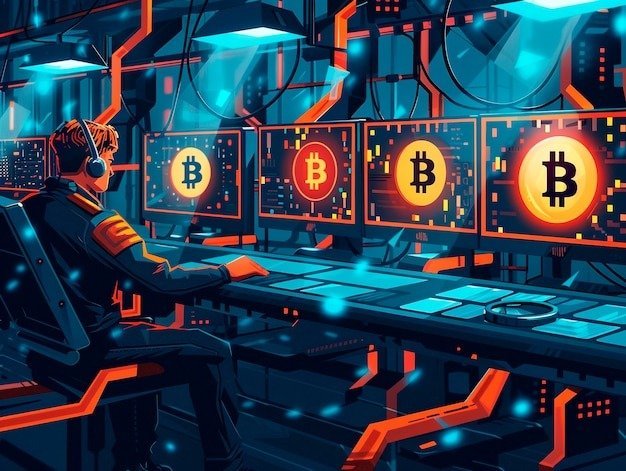Introduction
The financial landscape is undergoing a profound transformation, driven by the rise of cryptocurrencies and the increasing integration of traditional fiat systems with digital assets. As the world grapples with economic uncertainty and rapid technological advancements, the future of fiat currency is closely intertwined with the evolution of blockchain technology. This article explores the future of fiat through the lenses of staking, exchanges, and the vital role of block explorers in enhancing transparency and accessibility in the financial ecosystem.
The Rise of Staking in the Fiat Ecosystem
Staking has emerged as a popular mechanism within the cryptocurrency space, allowing individuals to earn rewards by participating in the network’s validation processes. This concept, while initially rooted in the realm of digital assets, is beginning to find parallels in the fiat world. The potential for integrating staking with fiat currencies could lead to innovative solutions aimed at enhancing liquidity and incentivizing savings.
With the advent of central bank digital currencies (CBDCs), the idea of staking could be adopted by governments to encourage the public to hold and utilize digital fiat. For instance, citizens might stake their CBDC holdings in exchange for interest, effectively transforming traditional savings accounts. This would not only stimulate economic activity but also foster a more engaged and financially literate population.
Exchanges: The Bridge Between Fiat and Digital Assets
Exchanges play a pivotal role in the cryptocurrency ecosystem, serving as the primary venues for trading digital assets. However, their importance extends beyond mere transactions; they are the gateways for fiat integration into the blockchain world. As more exchanges begin to offer fiat on-ramps, the barriers between traditional finance and cryptocurrency are fading.
One of the most notable trends is the rise of decentralized exchanges (DEXs) that facilitate peer-to-peer trading without the need for intermediaries. These platforms enhance user control and reduce reliance on centralized institutions, aligning with the core principles of decentralization. However, for fiat integration to succeed, exchanges must adhere to regulatory requirements while ensuring robust security measures to protect user funds.
The Role of Block Explorers in Enhancing Transparency
Block explorers are essential tools within the blockchain ecosystem, providing users with the ability to view transaction histories, wallet balances, and network statistics. Their role in fostering transparency cannot be overstated, especially as the financial sector shifts towards more open and accountable systems.
In the context of fiat and cryptocurrency integration, block explorers can serve as critical resources for users seeking to understand the flow of funds. For example, when a fiat transaction is converted into a digital asset, the block explorer allows users to track the transaction in real-time, offering insights into the process and enhancing trust in the system. Moreover, the ability to audit transactions on a public ledger can significantly reduce instances of fraud and corruption.
Challenges Ahead: Regulation and Adoption
Despite the promising prospects for the future of fiat intertwined with blockchain technology, several challenges remain. Regulatory uncertainty continues to loom over the cryptocurrency space, with governments struggling to establish frameworks that balance innovation with consumer protection. The lack of clear regulations can hinder the adoption of digital assets, as potential users may be wary of engaging in a space perceived as volatile and unregulated.
Moreover, the transition from traditional fiat systems to digital equivalents necessitates widespread education and trust-building measures. As individuals become more familiar with blockchain technology, the adoption of digital assets will likely accelerate. Creating user-friendly interfaces and educational resources will be crucial in demystifying cryptocurrencies and encouraging broader participation.
Conclusion: A New Era for Fiat
The future of fiat currency is poised for a significant transformation as the lines between traditional finance and cryptocurrency continue to blur. Staking mechanisms, exchanges, and block explorers are at the forefront of this evolution, providing innovative solutions to enhance liquidity, foster engagement, and promote transparency. As we navigate the complexities of this new financial landscape, collaboration between regulators, financial institutions, and the crypto community will be essential to ensure a seamless transition towards a more inclusive and efficient economy.

